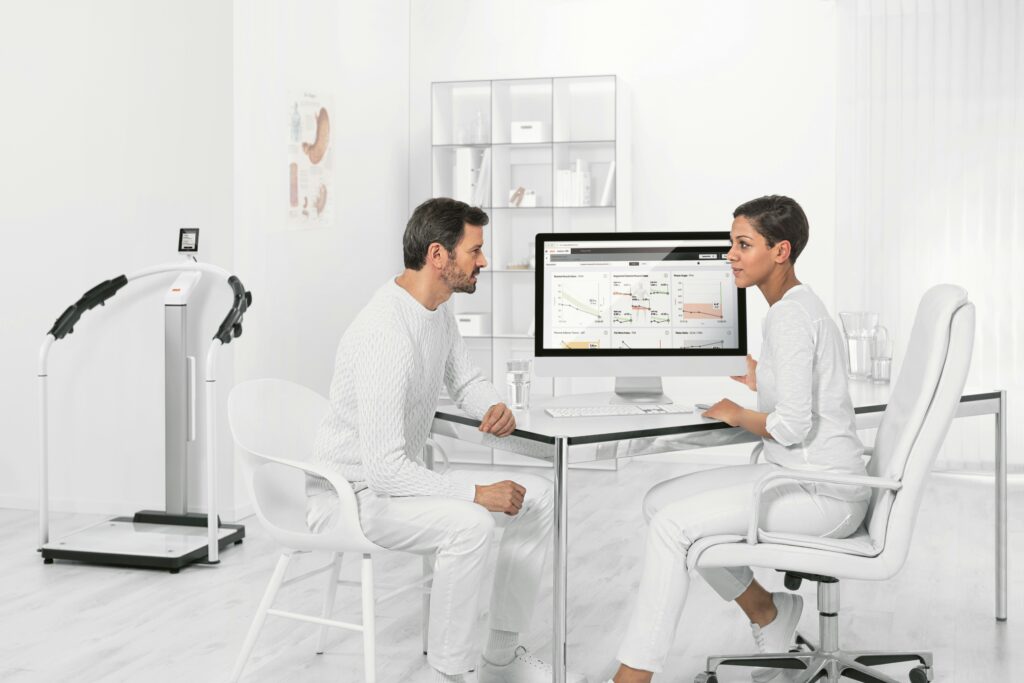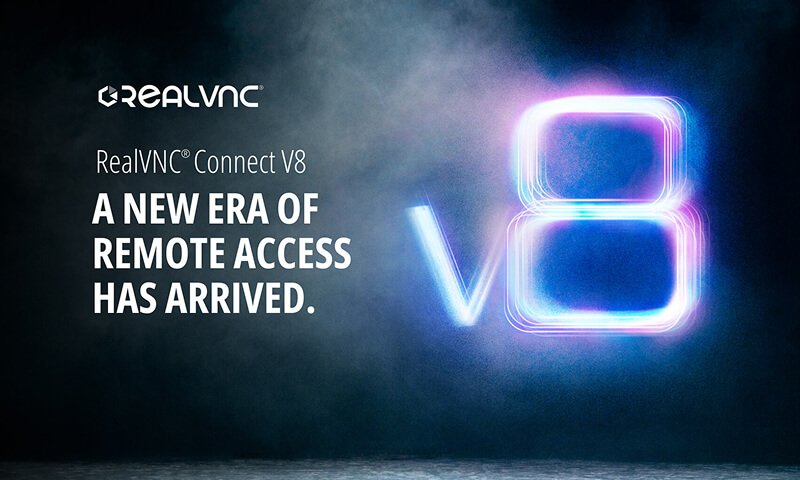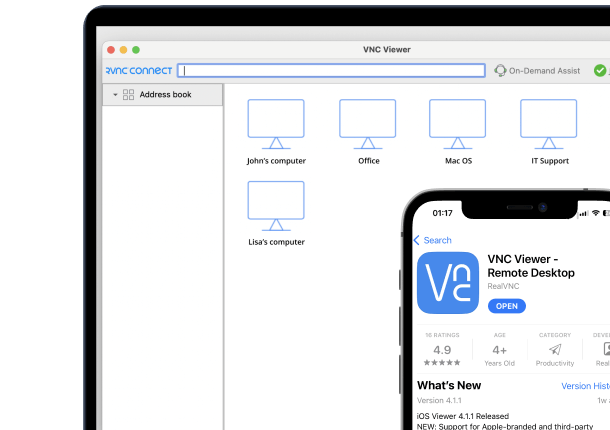
Healthcare organizations worldwide are facing challenges to deliver precise, efficient care while dealing with more patients. Augmented reality is a solution that overlays digital information onto real-world environments, giving clinical decision-making and patient outcomes a boost.
This technology is a digital innovation that has practical medical applications, and gives healthcare professionals upgraded abilities in surgical planning and medical training, with the possibility of remote collaboration. It needs secure remote access to infrastructure for these systems to work properly. Reliability and security is needed in healthcare environments more than ever.
What Is Augmented Reality in Healthcare?
Augmented reality in a hospital setting uses digital data and combines it with real-world environments, overlaying graphics, sounds, and interactive feedback to improve clinical decision-making and patient wellbeing. It is a break through in modern medicine, but it isn’t virtual reality, which creates entirely simulated environments. Virtual Reality is a very different technology and serves a different purpose. AR takes the existing physical world and adds digital overlays directly in the clinician’s field of view.
The fundamental principles of augmented reality involve sophisticated interfaces that overlay visual, sound, or sensory information like tactile feedback onto physical environments. Some other functionalities are object recognition for identifying medical equipment, navigation assistance providing real-time guidance during medical procedures, and enhanced visual perception where augmented reality systems adjust brightness, contrast, or color schemes to highlight specific anatomical features.
This “reality-first” paradigm proves particularly valuable in clinical settings where direct patient interaction, awareness of physical anatomy, and real life environment settings are still important. Augmented Reality (AR) keeps medical professionals connected to their physical surroundings while augmenting their capabilities in the virtual space, making the technology easier to adopt within the highly regulated healthcare industry.
Top Applications of Augmented Reality in Healthcare Today
Surgical Planning and Precision Enhancement
AR revolutionizes surgical procedures by allowing surgeons with real-time, 3D visualizations of patient anatomy. Sophisticated 3D models derived from high-resolution CT or MRI scans are overlaid directly onto patients, allowing surgeons to “see through” patients and get a better understanding of internal structures before making incisions.
During procedures, Augmented Reality (AR) systems show anatomical information and patient vitals directly within the surgeon’s view. This helps guide many procedures from drawing blood to making incisions, highlighting important things to avoid like nerves or blood vessels. Being able to visualize like this helps minimize risks during complicated operations and leads to shorter patient recovery times.
There are already FDA-cleared platforms that use headsets to project diagnostic imaging into real-world environments, helping surgical planning. The integration of AR with robotic surgical procedures is another area where better interfaces improve surgeries and makes them less invasive.
Medical Education and Professional Development
Using an AR environment helps medical training by offering very realistic and immersive ways to learn, from surgery to physical therapy. Medical trainees and experienced surgeons can practice complex surgical techniques and clinical procedures in risk-free simulations, eliminating the need for live patients to train medical students.
Beyond surgical skills, AR technology allows for virtual patient simulations, allowing medical students to practice crucial communication skills in medicine and clinical diagnosis in controlled environments. augmented reality-based learning modules provide comprehensive educational experiences through dynamic anatomical visualization and simulation, effectively replacing traditional static textbook diagrams with interactive 3D models.
There is a projected shortage of up to 124,000 medical practitioners in the United States by 2034, which shows the urgent need for better training. AR technology deals with this challenge by accelerating learning curves and improving skill acquisition, allowing both new physicians to achieve competency faster and existing professionals to upskill effectively on new therapies and techniques.
Enhancing Surgical Precision with Augmented Reality in Healthcare
Surgical applications represent AR’s most immediate and impactful healthcare implementation. Allowing surgeons to use AR to visualize patient anatomy during procedures has many advantages. AR-supported systems integrate advanced imaging to enable precise surgical navigation, comprehensive preoperative planning, and optimized outcomes through detailed digital modeling.
The capability to enable surgeons to plan timing, angles, and sequences of actions based on hyper-realistic 3D models before surgery extends beyond simple visualization. This predictive precision allows proactive anticipation of potential challenges and optimization of surgical approaches, rather than reacting to unforeseen complexities during procedures.
This evolution transforms surgery from a purely reactive, skill-based procedure to one significantly informed by data-driven, pre-emptive strategies. Integration with robotic-assisted systems that translate enhanced perception into improved dexterity fundamentally changes surgical paradigms, leading to fewer complications, faster recovery times, and more consistent patient outcomes.
Remote Collaboration & Telemedicine with Augmented Reality in Healthcare
Various industries see AR as a game-changer, not just in telemedicine and remote collaboration for healthcare professionals. It is bridging geographical distances and democratizing access to specialized medical expertise. AR technology enables specialists to view and guide procedures from distant locations, providing critical remote assistance and facilitating advanced telemedicine consultations.
In emergency situations, AR headsets provide real-time guidance and are an accurate data source for paramedics or volunteers, connecting them with remote medical experts who offer immediate assistance and instructions. This capability allows experienced medical specialists to virtually “stand” next to local healthcare providers during procedures, offering real-time guidance and step-by-step corrections as if physically present.
Remote collaboration platforms seamlessly combine AR, AI, and telepresence technologies, allowing remote surgeons to see precisely what on-site surgeons observe, annotate directly into their field of vision, and guide procedures with remarkable precision. Clinical studies demonstrate that such AR tele-mentoring platforms prove highly effective in safely building medical competency in advanced-level surgical trainees performing complex procedures.
RealVNC Connect plays a crucial role in enabling these collaborative capabilities. Healthcare organizations need reliable infrastructure with encrypted connections and maintains compliance with healthcare regulations when accessing AR systems remotely. RealVNC Connect provides comprehensive security features including end-to-end encryption, granular access controls, and continuous monitoring, making it the superior solution for protecting sensitive patient data during remote sessions.
Augmented Reality in Healthcare: Patient Engagement and Rehabilitation
AR significantly enhances patient education and engagement by simplifying complex medical explanations with interactive visuals. This approach transforms passive listening into active learning, helping to educate patients to better understand their conditions, physical therapy and treatment plans.
Patients can interactively explore detailed 3D models and virtual objects with real time feedback, displaying their specific conditions, visualizing muscles, bones, and organs while gaining clear understanding of how various conditions affect their bodies. Clinical studies demonstrate real benefits: a 12-month longitudinal study revealed that diabetes patients receiving training using AI-based AR tools achieved a 47% higher disease literacy rate compared to traditional methods.
Physical rehabilitation benefits significantly from AR’s interactive capabilities. AR provides safe and controlled environments for patients to practice movements and orient exercises, offering unobtrusive intervention methods in both motor and cognitive rehabilitation. This leads to greater patient motivation and enables caregivers to provide effective, low-cost physiotherapy at home as user perception changes around the technology.
Some of the best examples of what AR applications can do are things like capturing patients’ motions during exercise and accurately detecting key joints without external sensors and displaying core axes of movement. This provides therapists with precise data to analyze patient performance and progress. Gamification of workout sessions through AR has demonstrated increased patient engagement and improved physical outcomes thanks to visual feedback in the user’s environment.
Addressing Challenges of Implementing Healthcare Augmented Reality Solutions
AR implementation faces a few challenges like high development and hardware costs, data privacy and security concerns, and regulatory compliance requirements. Solutions involve streamlined workflows, integrated strategy models, and secure management systems to simplify AR integration into clinical settings.
Using Augmented Reality in a medical setting is not easy. The initial cost of equipment for AR solutions can be substantial, including not only AR devices (like smart glasses), but also necessary infrastructure upgrades and AR apps development. Technical complexity associated with integrating AR devices into existing healthcare IT systems is another hurdle, often requiring specialized technical expertise for deployment, maintenance, and troubleshooting.
Data security and regulatory compliance represent critical considerations. The digital nature of AR applications involves collection, transmission, and storage of vast amounts of sensitive patient health data, raising significant privacy and security concerns. Statistical evidence indicates approximately 77% of healthcare organizations reported cybersecurity incidents in 2023, emphasizing the critical necessity for robust data protection in AR applications.
Robust remote access solutions with encryption and access controls become essential for protecting sensitive patient records when accessing AR systems remotely, ensuring compliance with regulations such as HIPAA. Healthcare organizations must implement comprehensive security measures including end-to-end encryption, multi-factor authentication, granular access controls, and continuous security monitoring to address these challenges effectively.
Cost-Benefit Analysis and ROI Considerations
Healthcare organizations evaluating AR implementation must consider comprehensive cost-benefit analyses that extend beyond initial capital expenditure. While AR systems require substantial upfront investment in hardware, software, and infrastructure, the long-term operational benefits demonstrate compelling return on investment across multiple dimensions.
Direct cost savings emerge through reduced surgical complications and shorter patient recovery times. The human body is very complicated, and enhanced surgical precision allows AR visualization, which directly translates to fewer post-operative complications, reduced readmission rates, and decreased length of hospital stays. Studies indicate that minimally invasive procedures supported by AR apps that provide guidance can reduce recovery times by 20-30%, generating significant cost savings in bed utilization and post-operative care.
Training improvements are another cost consideration. AR-based medical training reduces dependence on expensive cadaver-based training thanks to virtual objects. This gets rid of the need for extensive physical simulation equipment, and accelerates competency development. The ability to practice complex procedures repeatedly in risk-free environments reduces the learning curve for new physicians, addressing the projected physician shortage while optimizing training resource allocation.
Remote collaboration capabilities enabled by secure AR infrastructure reduce specialist travel costs and improve access to expert consultation. Rather than flying specialists to remote locations or transferring patients to major medical centers, AR-enabled remote guidance provides immediate access to specialized expertise. This democratization of medical knowledge reduces both direct travel expenses and the indirect costs associated with delayed treatment.
Long-term workforce development benefits address the broader economic impact of the physician shortage in the healthcare industry. By optimizing training pipelines and enhancing the capabilities of existing medical professionals, AR implementation contributes to addressing the projected shortage of 124,000 physicians, potentially avoiding billions in healthcare system strain costs.
Integration with Existing Healthcare IT Infrastructure and Medical Devices
Successfully implementing AR requires means integrating with healthcare IT ecosystems. Healthcare organizations operate complex information systems that must interoperate effectively with AR platforms to maximize clinical utility and operational efficiency.
Electronic Health Record integration represents a fundamental requirement for AR clinical applications. AR systems must access real-time patient information, medical imaging, and historical records to provide contextually relevant information during procedures. Integration with major EHR platforms through standardized APIs ensures that AR overlays display current, accurate patient information synchronized with existing clinical workflows.
Hospital Information Systems compatibility extends beyond EHR integration to encompass laboratory systems, pharmacy management, medical imaging archives, and clinical decision support tools. AR platforms must interoperate with Picture Archiving and Communication Systems to access high-resolution medical images for surgical overlays and diagnostic visualization.
Interoperability standards are already becoming available, including HL7 FHIR enable standardized data exchange between AR systems like Google Glass and Microsoft Hololens, with existing healthcare infrastructure. These protocols ensure that patient information flows seamlessly between systems while maintaining data integrity and security standards.
Legacy system modernization often becomes necessary to support AR implementation. Many healthcare organizations operate aging IT infrastructure that requires updates or replacement to accommodate AR system requirements. Cloud-based deployment strategies can bridge compatibility gaps while providing scalable infrastructure for AR applications.
Centralized remote access management becomes essential for maintaining secure connectivity across integrated healthcare IT environments. Remote access solutions enable IT administrators to monitor system performance, manage user access, and ensure security compliance across complex, interconnected healthcare technology ecosystems.
Future Trends and Innovations of Augmented Reality in Healthcare
AR adoption in healthcare is projected to experience significant growth, with market expansion expected to reach over $46 billion by 2032. Emerging trends include advanced holographic interfaces, enhanced diagnostic accuracy, AI-powered AR integrations, and clinical research breakthroughs that promise substantial impact on medical practices. Stanford University researchers, led by Associate Professor Gordon Wetzstein, have developed a prototype AR headset that looks like regular glasses but can display rich, full-color, 3D holographic images, mixing AR and the external world.
The continued integration of AR with artificial intelligence will continue to build on diagnostic accuracy by interpreting complex medical images and lab results in real-time. The results often match or exceed human accuracy thanks to mixed reality technologies. AI will streamline not just medicine, but also administrative workflows by automating routine tasks and allowing healthcare providers to focus more on patient outcomes.
Development of holographic interfaces and AR glasses are a natural progression from current AR visualization and mixed reality technologies. The ability to project highly realistic, interactive 3D human anatomy models and patient data directly into physical space will become more commonplace, further enhancing surgical planning, medical education, and patient consultations, giving everyone a better understanding of potential procedures.
Digital twins represent another significant future trend, involving creation of highly customized digital replicas of individual patients and essential components based on their unique anatomy and physiological data in a safe environment. These digital twins, using augmented reality overlays, will move beyond generic anatomical models to provide patient-specific insights, revolutionizing precision medicine and pre-surgical planning with unprecedented diagnostic and therapeutic accuracy.
Conclusion
Augmented reality is set to transform healthcare delivery by enhancing precision, improving educational outcomes, and enabling unprecedented levels of remote collaboration. Allowing students access to these technologies helps with training and upskilling at a much faster pace than traditional classrooms. The technology’s ability to overlay digital information onto real-world environments creates unique opportunities for surgical planning, medical training, and patient engagement that were previously impossible.
Getting the full potential out of healthcare augmented reality requires addressing critical challenges including implementation costs, technical complexity, and most importantly, data security and regulatory compliance. Healthcare organizations must prioritize secure infrastructure solutions that protect sensitive patient information while enabling the collaborative operating room capabilities that make AR transformative for the human body.
The integration of robust remote access solutions ensures that healthcare augmented reality systems operate with the security and reliability that healthcare environments demand. As augmented reality technology continues evolving with AI integration and holographic interfaces, healthcare organizations that strategically invest in secure, compliant AR infrastructure will be best positioned to deliver enhanced patient care and operational excellence.
Frequently Asked Questions
How is augmented reality being used in healthcare?
Augmented reality in healthcare overlays digital information onto real-world medical environments, enhancing operations, training, patient knowledge, and remote collaboration. Healthcare professionals use AR to visualize anatomy during operations, train future doctors and nurses through immersive simulations, and enable specialists to provide remote guidance during critical procedures.
How is AR used in surgery?
Surgeons utilize AR technology to visualize anatomy in real-time during surgical procedures. AR devices project 3D models derived from CT or MRI scans directly onto patients, allowing surgeons to see internal structures before making incisions. This enhanced visualization improves surgical precision and reduces complications during complex operations.
Why is augmented and virtual reality in healthcare assistive?
Augmented reality and virtual reality technologies assist healthcare by providing immersive training environments for medical trainees, enabling risk-free practice of surgical procedures, and offering interactive education tools. These technologies help address the projected shortage of medical practitioners while improving patient experiences through enhanced precision and improved understanding of medical conditions.
What are the four major applications of augmented reality within the healthcare sector?
The four major applications include: surgical planning and precision enhancement using AR headsets and smart glasses; healthcare learning and training through virtual objects and simulated environments; engagement and rehabilitation with interactive AR apps; and remote collaboration allowing professionals in healthcare to provide guidance across distances while maintaining secure information access, even on mobile devices.
Is remote access secure for AR in healthcare?
Yes, solutions like RealVNC Connect provide enterprise-grade remote access solutions with comprehensive security features including end-to-end encryption, multi-factor authentication, and granular access controls specifically designed to meet healthcare compliance requirements such as HIPAA and GDPR, ensuring secure access to AR systems remotely.







